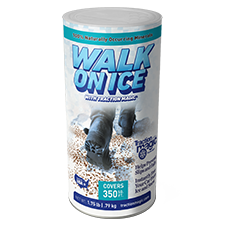What Type Of Ice Melt Is Safe For Concrete?
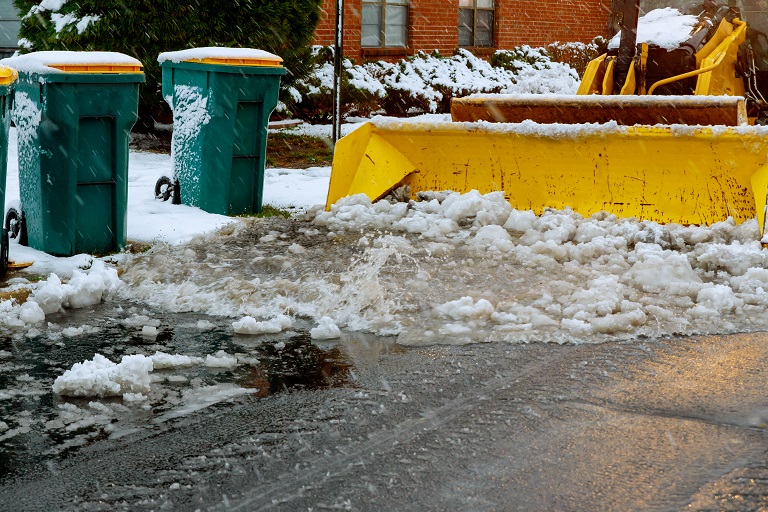
With the first snowfall and ice on the ground, many of you will be looking for ice melt solutions. Do you realize that options such as rock salt or salt-based ice melts might harm your concrete driveway?
Millions of home and business owners inadvertently harm their concrete every year because of wrong deicing procedures. Driveways, sidewalks, and other concrete surfaces are subjected to the effects of the most popular deicer with each freeze and thaw.
What Type of Ice Melt is Safe for Concrete?
Winter weather brings icy driveways, walkways, and parking lots, necessitating the use of ice melt products. However, not all ice melts are created equal, and many can cause long-term damage to concrete surfaces if improperly used. Choosing the right ice melt for concrete and applying it correctly can make a significant difference in maintaining the integrity and appearance of your property. This article delves into the effects of ice melt ingredients, application best practices, and eco-friendly alternatives to protect your concrete surfaces year-round.

The most popular deicing agent is rock salt (sodium chloride). Other ice melts in the market have rock salt as the main constituent. But it is not a safe ice melt for concrete.
How Does Concrete Get Damaged?
Concrete appears to be a smooth, solid surface from a distance, but it is covered in millions of microscopic pores. During the hotter summer months, you can even observe this phenomenon by splattering water on the pavement and watching it drain.
However, when utilizing rock salt as a deicing agent in the winter, those pores represent an issue. There would be no problem if the ice and snow on top of your concrete remained frozen.
How Does Salt Damage Your Concrete?
However, because an icy driveway is quite hazardous to both your employees and guests, you’ll need to use some deicer to keep it safe. The issue is that once the rock salt has melted the snow and ice, it penetrates through the concrete pores and saturates them.
The damage will worsen with each freeze-thaw cycle over the winter, and you may soon find yourself needing to make costly repairs. Moreover, rock salt is “hygroscopic,” which means it draws moisture, thus damaging your concrete further.
It’s critical to find an ice melt for your concrete if you want it to last a long time without scarring. The best approach to protect your concrete is to use an ice melt that reduces the refreezing temperature as much as possible. As a result, your concrete ice melt will not let snow refreeze as frequently, putting an end to the freeze-thaw cycle.
How Ice Melt Ingredients Affect Concrete Over Time
Ice melt products are designed to lower the freezing point of water, making ice easier to remove. However, their chemical composition can have unintended consequences for concrete surfaces.
Chlorides and Their Impact
Common deicing agents, such as sodium chloride (rock salt) and calcium chloride, can penetrate the pores of concrete, leading to scaling and spalling. These chlorides accelerate freeze-thaw cycles, causing water to expand and contract within the concrete, which weakens its structure over time.
Magnesium Chloride
Magnesium chloride is often marketed as less harmful to concrete, but overuse can still lead to deterioration. It draws moisture into the concrete, which can exacerbate damage during freezing conditions.
Non-Chloride Alternatives
Chloride-free ice melts, such as Safe Thaw, are specifically designed to be gentle on concrete while effectively melting ice. These products reduce the risk of surface damage and are safer for long-term use.
What Is Safe Ice Melt For Concrete?
The modified crystalline amide core interleaved with glycol admixture is a unique toxin-free product that immediately goes to work. The liquid component of the mixture quickly begins to melt the ice by breaking the surface tension. The crystal core of the chemical can then enter the ice and start to destabilize it, hastening the melting process. It absorbs heat from the sun during the day and intensifies the Endothermic reaction. It gives 72 hours of long-lasting protection to your surface. The ice melt also provides you traction thus, saving you from any slip and fall liabilities.
100% salt & chloride-free, fast acting Ice Management Solution
Best Practices for Applying Ice Melt Safely
Using ice melt products responsibly is as important as selecting the right type. Here are some tips to minimize risks:
Apply in Appropriate Quantities
Overapplication of ice melt can increase the risk of damage to concrete and nearby vegetation. Always follow the manufacturer’s recommendations for the correct amount to use.
Spread Evenly
Use a spreader to ensure an even application. Clumps of ice melt can concentrate chemicals in one area, leading to localized damage.
Remove Excess Material
Once the ice has melted, sweep up any remaining granules to prevent them from being tracked indoors or accumulating on the surface. This step also reduces the risk of staining and surface degradation.
Combine with Mechanical Removal
Pairing ice melt with mechanical snow removal tools, like shovels or snow blowers, minimizes the amount of product needed while maintaining safe surfaces.
Differences Between Residential and Commercial Concrete Ice Melt Needs
The type of concrete surface and its intended use can influence the choice of ice melt products.
Residential Applications
Homeowners typically use ice melt for driveways, walkways, and patios. For these smaller areas, choosing ice melter concrete safe products ensures minimal environmental and structural impact while maintaining safety for pets and children.
Commercial Applications
Parking lots, sidewalks, and larger concrete areas in commercial settings require high-performance ice melt capable of handling heavy traffic and extreme weather. These situations often necessitate products designed for lower temperatures and prolonged effectiveness, such as Safe Thaw.
Regional Considerations
In areas with harsher winters, such as the Midwest or Northeast, products with a broader effective temperature range are necessary. Conversely, milder climates may require less aggressive options.
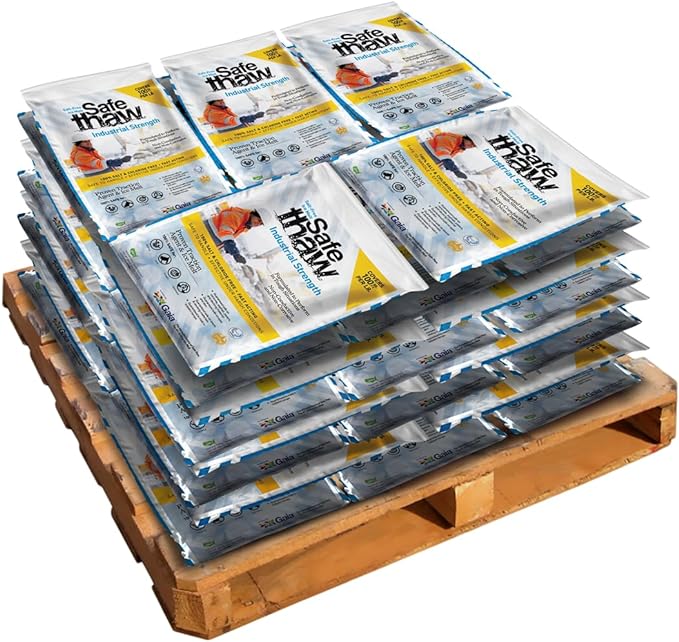
40 Bags
Safe Paw Thaw Industrial Strength Salt-Free Pet Safe Snow Ice Melter and Traction Agent for Concrete, Asphalt, Decks, Lawns, and More, 43 Pound Bag- 40 Bags
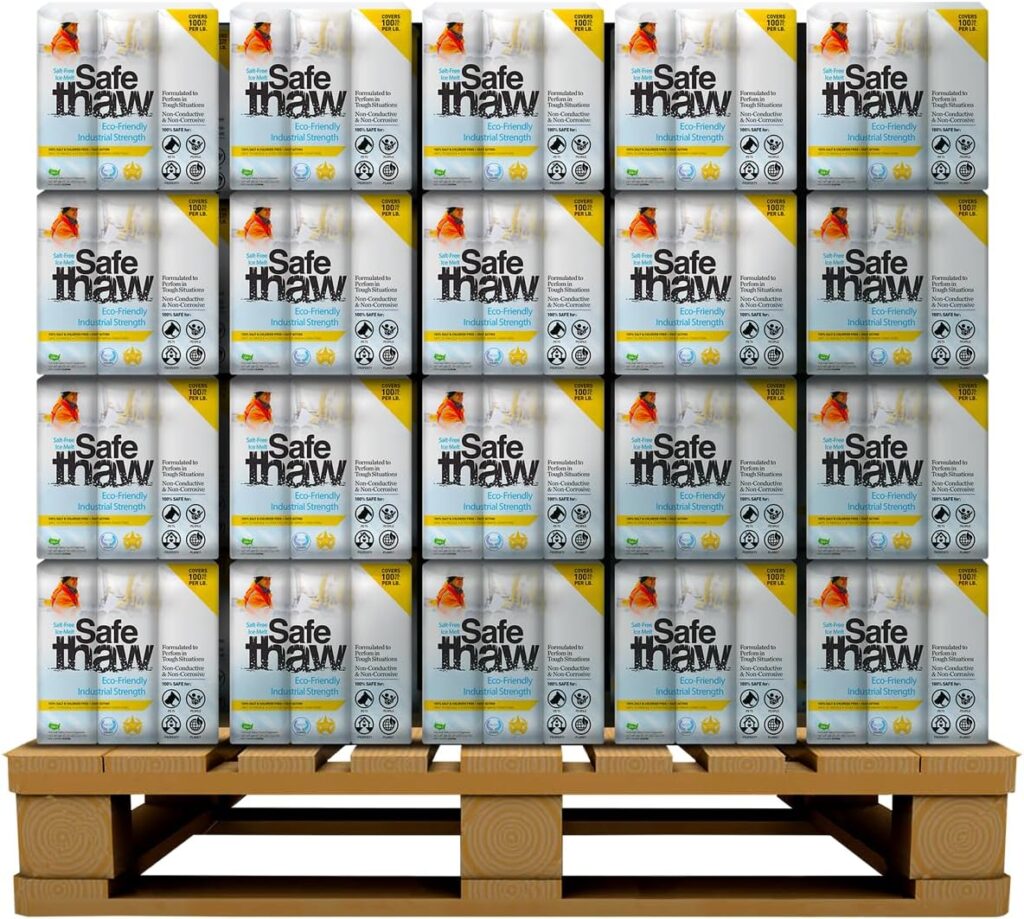
100 Boxes
Safe Thaw Industrial Strength 100% Salt/Chloride-Free, Pet/Paw-Safe Snow & Ice Melter and Traction Agent. Use on Concrete, Asphalt, Roofs & On Any Surface, 30 Pound FlexiPail- 100 Boxes
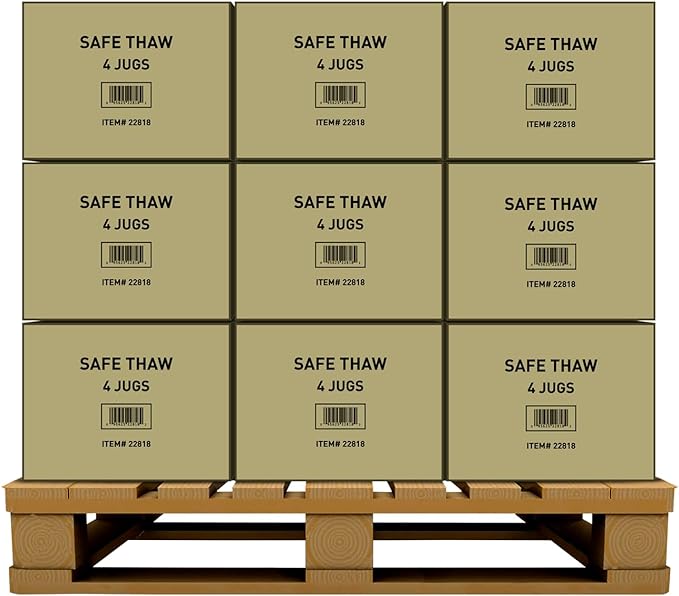
105 Jugs
Safe Thaw Concrete Safe 100% Salt-Free, Pet Safe Snow and ice Melter, Industrial Strength, Chloride-Free, and Traction Agent. Use on Asphalt, Roofs & On Any Surface, 10 Pound Jug- 105 Jugs
Long-Term Maintenance Tips for Concrete Surfaces
Maintaining your concrete surfaces year-round ensures they remain durable and attractive, even after harsh winters.
Seal Your Concrete
Applying a high-quality sealer every two to three years creates a protective barrier against moisture and deicing chemicals. Sealants also reduce the likelihood of scaling and spalling.
Regular Cleaning
Clean your concrete surfaces regularly to remove dirt, debris, and any residual deicing products. This prevents buildup that can degrade the surface over time.
Inspect for Damage
Conduct periodic inspections to identify and address cracks or chips early. Prompt repairs prevent small issues from escalating into costly damage.
Consider Concrete vs Asphalt Driveway Maintenance
While concrete driveways require proper care to avoid damage, they are generally more durable and low-maintenance than asphalt driveways in the long term. Understanding the concrete vs asphalt driveway trade-offs can help you make informed decisions about repairs and replacements.
Conclusion
Selecting the right ice melt for concrete and applying it responsibly is essential for protecting your surfaces during winter. By understanding how deicing ingredients interact with concrete, you can make informed choices that reduce damage and extend the lifespan of your driveways and walkways.
Eco-friendly alternatives, such as Safe Thaw, provide effective ice control without harming your concrete or the environment. Combine these with best practices for application and regular maintenance to keep your surfaces safe, attractive, and durable year-round.
Try Also Our Other Winter Safety Products:
Safe Paw
The Original and #1 Selling Pet and Child Safe Ice Melt for over 20 years. Guaranteed environmentally safe –It won’t harm animals or children, and it won’t damage your property. That’s Safe Paw. Safe Paw can change how winter affects our planet.

Walk On Ice
Prevent slips at home, work or on the go, The handy disposable canister can be taken everywhere, with the same 100% naturally occurring minerals that provide instant traction on ice or snow. Use it on sidewalks, steps, or as an instant traction agent for your car.
